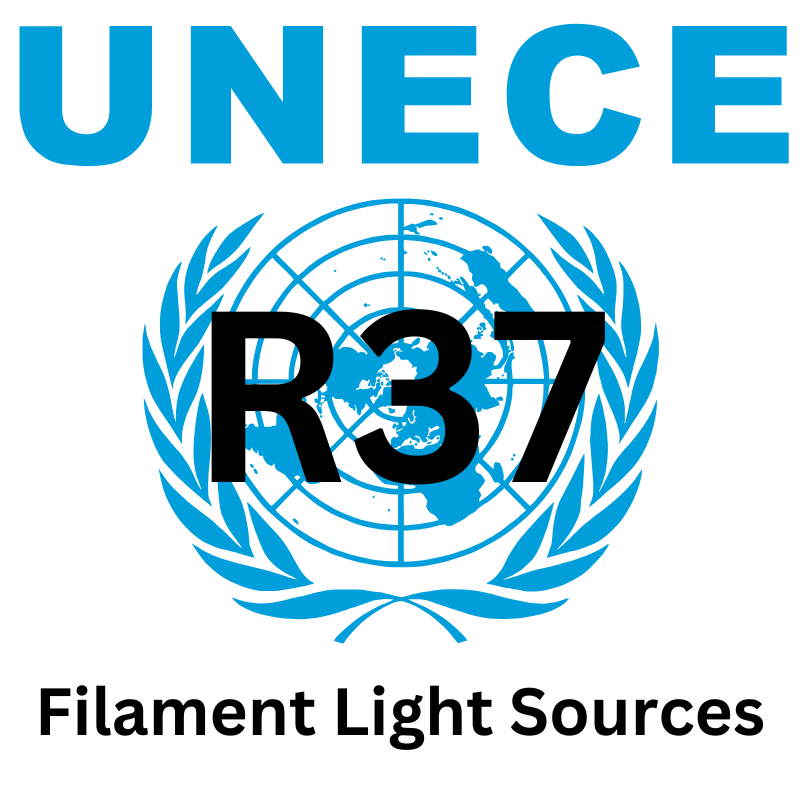Guide To: UNECE R37 - Filament light sources
23 July 2023

UN ECE Regulation No. 37 provides the uniform provisions concerning the approval of filament lamps for use in approved lamp units of power-driven vehicles and their trailers. These lamps include various categories of bulbs that are essential for vehicle lighting, ranging from headlights to signalling lamps. The regulation sets out technical and performance requirements to ensure safety and standardization across the automotive industry.
Scope of the Regulation
UN ECE R37 applies to:
- Filament lamps for use in approved lighting devices on motor vehicles and trailers. The lamps covered include those used in headlights, signal lights, and other vehicle lamps designed to improve visibility and safety on the road.
Key Features of UN ECE R37
Lamp Categories:
- The regulation defines various categories of filament lamps, including well-known types such as H4, P21W, PY21W, and T4W. Each lamp category has specific technical specifications for size, shape, and performance.
- Different categories address the needs of various lighting applications, such as headlights (e.g., H4) or signalling lamps (e.g., P21W).
Technical Requirements:
- Photometric Characteristics: The lamps must meet specific requirements for light output (luminous flux) and light distribution. This ensures that the lamps provide adequate illumination without causing excessive glare.
- Filament Positioning and Design: Strict tolerances are set for the filament’s position within the bulb to ensure consistent light distribution. The physical dimensions and placement of the filament are crucial for optimal performance.
Testing and Approval:
- Filament lamps are subjected to rigorous testing to ensure their compliance with performance standards. This includes measuring the light intensity and distribution at specified voltages.
- Lamps that meet the requirements are granted an international approval mark, which indicates that the lamp has been tested and approved for use in vehicles according to UN ECE standards.
Marking and Conformity:
- Approved filament lamps must bear clear markings, including the manufacturer’s name or mark, rated voltage, wattage, and the relevant international designation of the lamp category.
- Manufacturers are also required to maintain quality control processes to ensure that lamps produced in series conform to the approved type.
Conclusion
UN ECE R37 plays a critical role in ensuring the safety and standardization of filament lamps used in vehicles worldwide. By setting stringent technical and testing standards, the regulation ensures that these lamps provide consistent and reliable performance. Compliance with R37 is essential for manufacturers and vehicle operators, ensuring that the lighting systems used on vehicles meet international safety standards.